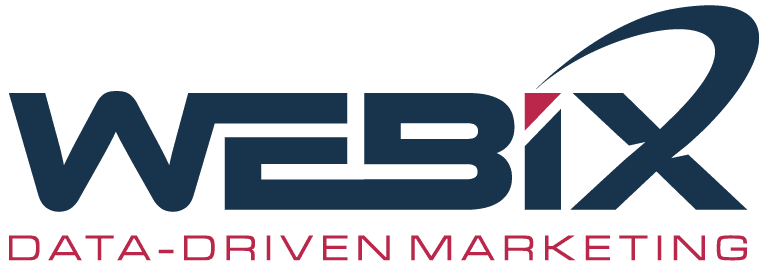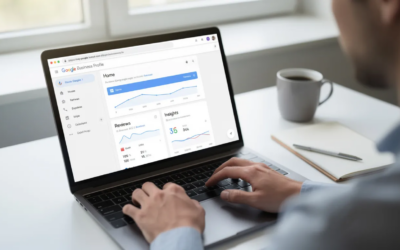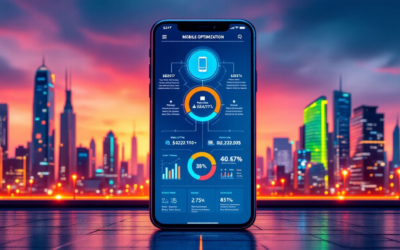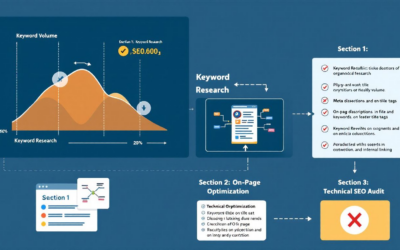This article will provide you with the necessary knowledge to craft a website that is not only user-friendly but also optimized for search engines, thereby enhancing your site’s visibility and traffic. By delving into everything from fundamental concepts to more technical strategies, we’ll ensure you gain a thorough grasp of SEO-friendly web design, which is crucial for improving search engine rankings and creating an SEO-friendly web presence.
Key Takeaways
-
User experience is crucial for SEO, with factors like fast loading speed, clean code, and mobile-friendly design playing key roles.
-
Proper structuring and optimization of on-page elements such as internal links, URL structure, title tags, and header tags significantly boost SEO.
-
Regularly updating content and using tools like Google Search Console helps maintain and improve SEO performance over time.
Understanding SEO Friendly Web Design

Creating a website that is SEO friendly involves integrating user experience, design elements, and technical optimization into a cohesive whole. These SEO-friendly websites don’t just captivate users, but also ensure search engines can effortlessly understand and catalogue their content. Beginning with an SEO-friendly web design from inception reduces the need for heavy adjustments later on — an efficient strategy for companies looking to climb up in search engine rankings while enhancing site performance.
A website designed with SEO friendliness at its core not only strengthens brand trust but also heightens the user’s interaction with the site and cuts down on marketing expenditures. By making it easier for search engine crawlers to parse through your site’s structure and material, you’re more likely to see increased visibility and user engagement. Emphasizing both visitor usability enhancements alongside optimizations meant for search engines creates synergy between web traffic and those very same engines—resulting in better accessibility as well as navigability of your online presence.
Prioritizing User Experience in SEO Web Design
The significance of user experience (UX) in SEO cannot be overstated, as it has a direct impact on search engine rankings. Google rewards websites that provide an outstanding UX by ranking them higher in its search results. A website offering a fluid and positive user experience indicates to search engines its value, potentially improving its position in the rankings. An exemplary UX design not only increases the duration of visits, but also elevates conversion rates while decreasing instances of cart abandonment on e-commerce platforms.
Emphasizing aspects like well-crafted calls-to-action, adaptive responsive design for various devices, and high readability can substantially enhance UX with resultant benefits for SEO. Presenting content that is easily readable and organized supports users’ ability to quickly assess relevance, which contributes to creating a site conducive to friendly use. By prioritizing UX, you lay the groundwork for increased interaction with your material from users. This escalates engagement metrics leading directly to improved performance within search engine algorithms.
Essential Principles of SEO Friendly Web Design
To master SEO-friendly web design, one must comprehend its fundamental principles: clean code, quick loading speed, and mobile-compatible design. These elements are crucial for creating a website that appeals to both users and search engines. Clean and simple code enhances search engine indexing and site loading speed, leading to better SEO performance.
Fast loading speed is essential for user experience and search engine rankings, as faster websites gain an advantage in ranking algorithms. Lastly, mobile-friendly design is vital due to the increasing number of mobile users and Google’s emphasis on mobile-optimized websites.
Clean and Simple Code
A website that is SEO friendly boasts a clean and succinct coding structure, which is the fundamental element for swift loading times and effective indexing. Streamlining your site’s code by reducing extraneous markup and honing in on crucial elements leads to a more efficient site that search engines can parse with ease.
Enhancing your SEO performance goes hand-in-hand with bolstering user experience through this strategy. It decreases page load durations as well as mitigates technical glitches users might face.
Fast Loading Speed

Quick loading speed plays a critical role in enhancing user experience and boosting search engine rankings. Users generally wait only 5-6 seconds for a page to load before leaving, which means that slow websites can significantly impact your bounce rate and overall engagement. Google also considers page speed as a ranking factor, so optimizing your site’s loading speed can give you an edge in search engine algorithms.
To achieve a fast loading website, focus on image optimization, leveraging browser caching, and minimizing CSS and JavaScript files. A 100ms reduction in load time can improve conversions by 8.4% for retail websites, highlighting the direct impact of speed on business performance.
Core Web Vitals, including page speed and visual stability, are essential metrics for assessing user experience and impacting SEO performance.
Mobile-Friendly Design
In today’s digital landscape, where mobile devices are the primary tool for accessing websites, creating a design compatible with these devices is essential. With Google implementing mobile-first indexing—where the search engine primarily utilizes the content of a site’s mobile version for both indexing and ranking—it becomes imperative to comply with technical requirements tailored to mobile usage. This includes implementing responsive design and ensuring images are optimized, which is critical not only for enhancing user experience but also in boosting your website’s position within search engine rankings.
Structuring Your Website for SEO

Effective internal linking paired with a clean URL architecture plays a vital role in bolstering your website’s SEO performance. It helps search engines better comprehend the organization and relevance of your site, which can lead to improved crawling and indexing.
Not only does an orderly website structure elevate the experience for users, but it also significantly increases the SEO friendliness of your website.
Effective Use of Internal Links
A clear strategy for internal linking enhances the navigation and structure of your site, thus facilitating a quick and easy information retrieval process for users as well as search engines. This optimization leads to increased SEO friendliness by developing a comprehensive network that search engine crawlers can navigate efficiently.
Implementing internal links effectively lowers bounce rates while simultaneously prompting visitors to interact more extensively with your website’s content. By creating an engaging user experience through thoughtful internal links, you invite deeper exploration of your site, which can improve its standing with search engines.
SEO Friendly URL Structure

Having a clear and informative URL structure is essential for the proper indexing of your website by search engines, as well as enhancing its visibility. URLs that are SEO-friendly aid in conveying the essence of your page content to search engines, which optimize their crawling process and boost your site’s ranking within pertinent search results.
In constructing an SEO-friendly URL, it’s recommended to utilize lowercase letters, incorporate descriptive keywords that reflect the content accurately, and connect these terms using hyphens.
Optimizing On-Page Elements
To improve both SEO performance and the user experience, it is vital to fine-tune on-page components that include:
-
Title tags
-
Meta descriptions
-
Header tags
-
Images
Optimizing these elements constitutes the core of search engine optimization. They assist in making your content comprehensible to search engines, which in turn aids in positioning your web pages efficiently within search engine results pages.
Title Tags and Meta Descriptions

Title tags and meta descriptions play a pivotal role as promotional banners in drawing users from search engines, impacting the likelihood of user clicks. It’s essential that every page has unique titles and meta descriptions for proper indexing by search engines, incorporating relevant keywords judiciously to avoid overstuffing.
The purpose of a meta description is to offer a concise summary of the content on a web page, usually no more than 155 characters in length. This snapshot includes the use of the actual meta description and appears beneath the title within search engine results.
Header Tags Optimization

Optimizing header tags with pertinent keywords improves the way search engines index pages and organize content more effectively. The structure and hierarchy of your content are established through the use of header tags (H1, H2, H3), which assists search engines in grasping what the page is about.
It’s important that each page features a distinct H1 tag that encapsulates its main subject, incorporating the primary keyword within it.
Image Optimization

To enhance the efficiency of a website, optimized images are essential as they contribute to faster page loading times and assist search engine crawlers in better indexing the site, thereby boosting its prominence on search engines. Ensuring that your images have descriptive file names and alt text is vital for making their content and context clear to search engines.
Compressing your images plays a significant role in speeding up webpage load times, which not only bolsters user experience but also aids in the overall performance optimization for search engines.
Enhancing Content for SEO
Within the domain of SEO, content is king. Improving content entails focusing on suitable keywords and producing exceptional work that captivates users, thereby boosting search engine rankings.
Utilizing pertinent keywords allows a business to surface in more applicable search results, which leads to increased traffic and enhances overall efficacy.
Targeting Keywords

It’s crucial to focus on relevant keywords if you aim to enhance your search engine rankings and attract valuable traffic to your site. Utilize tools such as Ahrefs and Google Trends for keyword research so that you can pinpoint both main keywords and long tail keywords that resonate with what your audience is searching for.
By weaving these identified keywords into the content of your website, it signals to search engines the relevance of your material, thereby bolstering its visibility in Search Engine Results Pages (SERPs).
Creating High-Quality Content
It is essential to develop content of exceptional quality that offers genuine value to your readers, as this plays a significant role in captivating users and elevating search engine rankings. By seamlessly integrating keywords into your material, you boost its relevance and discoverability.
Concentrate on presenting information that caters to the needs and curiosity of your audience. Doing so will enhance their experience while concurrently advancing your position within search engine rankings.
Technical SEO Considerations
Technical SEO focuses on enhancing your website’s infrastructure for better crawling and indexing by search engines, which entails employing sitemaps to ensure proper functionality in these areas.
Using Sitemaps

XML sitemaps are files that catalog all the URLs on your website which can be crawled, facilitating a quicker and more efficient discovery of new pages by search engines. Utilizing tools such as XML-Sitemaps.com or Screaming Frog to create and submit an XML sitemap aids search engines in comprehending the architecture of your site and locating all significant pages.
Ensuring Proper Crawling and Indexing

To guarantee that search engines can crawl and index your site effectively, it is crucial to resolve prevalent issues related to crawlability and enhance the structure of your website. Employ resources such as Screaming Frog and Semrush Site Audit to pinpoint problems like duplicate content, crawling difficulties, and broken links.
Correct setup of the robots.The txt file is essential for directing search engine crawlers to which pages should not be accessed. Make sure this file resides in the root directory.
Monitoring and Improving SEO Performance
Continuously tracking and improving SEO performance is an ongoing task that requires leveraging tools like Google Search Console, along with regularly updating your content. By keeping tabs on keyword rankings and examining various performance metrics, you can fine-tune your SEO strategies to boost the visibility and position of your website effectively.
Utilizing Google Search Console
The Performance Report within Google Search Console offers critical data regarding the SEO effectiveness of your website. This includes measurements such as:
-
Number of clicks received
-
Impressions counted
-
Click-through rate (CTR) average
-
Mean position in search results
Leverage this report to keep track of organic traffic and how keywords rank, pinpointing opportunities for enhancement while fine-tuning your SEO approaches.
Regularly Updating Content
By consistently refreshing your website’s content, you ensure it remains pertinent while also signaling activity to search engines. Updated content can boost engagement indicators such as page views and duration of visits, which in turn may draw new backlinks and strengthen the authority of your website.
Summary
To sum up, achieving an SEO-friendly web design necessitates a blend of user experience excellence, technical refinement, and superior content creation. Adhering to these eight pivotal steps will not only boost your website’s positioning in search engine rankings, but also amplify organic traffic flow while providing users with a stellar online journey. Keep in mind that SEO is a continuous endeavor demanding consistent vigilance and modifications. Begin integrating these tactics now to witness your website ascend to unprecedented levels!
Frequently Asked Questions
What is SEO-friendly web design?
Designing an SEO-friendly website involves crafting a site that prioritizes user engagement, aesthetic appeal, and technical aspects to boost its position in search engine results.
Why is user experience important for SEO?
Search engines place a high value on user experience (UX), which is essential for SEO, as it leads to enhanced engagement and improved conversion rates by giving priority to websites that offer an outstanding UX.
How can I improve my website’s loading speed?
To enhance the loading speed of your website, it is crucial to optimize images, utilize browser caching effectively and reduce the size of CSS and JavaScript files.
What are the benefits of targeting long-tail keywords?
By focusing on long tail keywords, you are able to draw in more targeted leads and enhance your position in search engine rankings owing to the precise nature of these terms and their typically lower competitive landscape.
How often should I update my website content?
To maintain relevance, enhance user engagement, and signal to search engines that your website is dynamic, it’s important to refresh your site content consistently. Doing so can draw in more visitors and boost the overall performance of your site.









